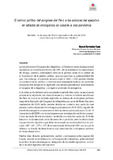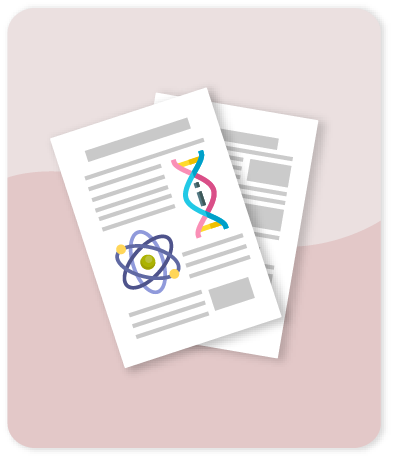Mostrar el registro sencillo del ítem
Predictive/Adaptive Control of Complex Systems Using Neural Engineering Techniques
Controle preditivo/adaptativo de sistemas complexos utilizando técnicas de engenharia neural;
Control predictivo/adaptativo de sistemas complejos utilizando técnicas de ingeniería neuronal
| dc.contributor.author | Gallardo Arancibia, José | |
| dc.contributor.author | Ayala Bravo, Claudio | |
| dc.contributor.author | Castro Castro, Rubén | |
| dc.date.accessioned | 2019-11-07T15:03:03Z | |
| dc.date.available | 2019-11-07T15:03:03Z | |
| dc.date.created | 2018-03-15 | |
| dc.identifier.issn | 1692-3324 | |
| dc.identifier.uri | http://hdl.handle.net/11407/5513 | |
| dc.description.abstract | The design and implementation of a predictive/adaptive control system is presented, using neural engineering techniques to control a non-linear MIMO system in order to control, at a later stage, the temperature and level in a non-linear conical plant. Preliminarily, conventional control structures were tested, which gave rise to the need to test intelligent control structures that allow the control objectives to be met more effectively. The process begins with the experimentation of different neuronal control structures, and then escalates to a predictive/adaptive neuronal control system. The results achieved at the simulation level, testing the proposed design on mathematical models of non-linear MIMO systems, were satisfactory and met the control objectives established, therefore, in the next stage of the project, the experimentation is estimated in the real plant under study. | eng |
| dc.description.abstract | Apresenta-se a criação e a implementação de um sistema de controle preditivo/adaptativo utilizando técnicas de engenharia neural para controlar um sistema MIMO não linear com o objetivo de controlar, em uma etapa posterior, a temperatura e o nível em uma planta não linear de tipo cônica. Preliminarmente, estruturas de controle convencional foram ensaiadas, o que fez com que surgisse a necessidade de testar estruturas e controle inteligente que permitissem cumprir os objetivos de controle de forma mais eficaz. O processo começa com a experimentação de diferentes estruturas de controle neural, para depois escalar em direção a um sistema de controle neural preditivo/adaptativo. Os resultados alcançados na simulação, ensaiando o desenho proposto sobre modelos matemáticos de sistemas MIMO não lineares, foram satisfatórios e cumpriram os objetivos de controle estabelecidos, portanto, na seguinte etapa do projeto, estima-se realizar a experimentação na planta real em estudo. | por |
| dc.description.abstract | Se presenta el diseño e implementación de un sistema de control predictivo/adaptativo, utilizando técnicas de ingeniería neuronal para controlar un sistema MIMO no lineal con el objeto de controlar, en una etapa posterior, la temperatura y el nivel en una planta no lineal de tipo cónica. Preliminarmente, se ensayaron estructuras de control convencional lo que hizo surgir la necesidad de probar estructuras de control inteligente que permitan cumplir más eficazmente con los objetivos de control. El proceso se inicia con la experimentación de diferentes estructuras de control neuronal, para luego escalar hacia un sistema de control neuronal predictivo/adaptativo. Los resultados logrados a nivel simulación, ensayando el diseño propuesto sobre modelos matemáticos de sistemas MIMO no lineales, fueron satisfactorios y cumplieron los objetivos de control establecidos, por tanto, en la siguiente etapa del proyecto, se estima la experimentación en la planta real en estudio. | spa |
| dc.format.extent | p. 157-172 | spa |
| dc.format.medium | Electrónico | spa |
| dc.format.mimetype | application/pdf | |
| dc.language.iso | spa | |
| dc.publisher | Universidad de Medellín | spa |
| dc.relation.uri | https://revistas.udem.edu.co/index.php/ingenierias/article/view/2196 | |
| dc.rights.uri | http://creativecommons.org/licenses/by-nc-sa/4.0/ | * |
| dc.source | Revista Ingenierías Universidad de Medellín; Vol. 17 Núm. 33 (2018): Julio-Diciembre; 157-172 | spa |
| dc.subject | Neuronal engineering | eng |
| dc.subject | Identification | eng |
| dc.subject | Predictive control | eng |
| dc.subject | Adaptive control | eng |
| dc.subject | Non-linear MIMO systems | eng |
| dc.subject | Engenharia neural | por |
| dc.subject | Identificação | por |
| dc.subject | Controle preditivo | por |
| dc.subject | Controle adaptativa | por |
| dc.subject | Sistemas MIMO não lineares | por |
| dc.subject | Ingeniería neuronal | spa |
| dc.subject | Identificación | spa |
| dc.subject | Control predictivo | spa |
| dc.subject | Control adaptativo | spa |
| dc.subject | Sistemas MIMO no lineales | spa |
| dc.title | Predictive/Adaptive Control of Complex Systems Using Neural Engineering Techniques | eng |
| dc.title | Controle preditivo/adaptativo de sistemas complexos utilizando técnicas de engenharia neural | por |
| dc.title | Control predictivo/adaptativo de sistemas complejos utilizando técnicas de ingeniería neuronal | spa |
| dc.type | Article | eng |
| dc.rights.accessrights | info:eu-repo/semantics/openAccess | |
| dc.identifier.doi | https://doi.org/10.22395/rium.v17n33a8 | |
| dc.relation.citationvolume | 17 | |
| dc.relation.citationissue | 33 | |
| dc.relation.citationstartpage | 157 | |
| dc.relation.citationendpage | 172 | |
| dc.audience | Comunidad Universidad de Medellín | spa |
| dc.publisher.faculty | Facultad de Ingenierías | spa |
| dc.coverage | Lat: 06 15 00 N degrees minutes Lat: 6.2500 decimal degreesLong: 075 36 00 W degrees minutes Long: -75.6000 decimal degrees | |
| dc.publisher.place | Medellín | spa |
| dc.creator.affiliation | Gallardo Arancibia, José; Universidad Católica del Norte | spa |
| dc.creator.affiliation | Ayala Bravo, Claudio; Universidad de Antofagasta | spa |
| dc.creator.affiliation | Castro Castro, Rubén; Universidad Arturo Prat | spa |
| dc.relation.references | [1] A. Conradie, C. Aldrich, “Neurocontrol of a multi-effect batch distillation pilot plant based on evolutionary reinforcement learning,” Chemical Engineering Science, vol. 65, N.° 5, pp. 1627-1643, 2010. | spa |
| dc.relation.references | [2] M. Bazaraa, H. Sherali, C.M. Shetty, Nonlinear programming: theory and Algorithms, 3.a ed., Nueva Jersey: Wiley Interscience, 2006, pp. 872. | spa |
| dc.relation.references | [3] S. Chen, S. A. Billings, “Representations of non-linear systems: the NARMAX model,” International Journal of Control, vol. 49, N.° 3, pp. 1013-1032, 1988. | spa |
| dc.relation.references | [4] H. González, M.S. Dutra, O. Lengerke, “Identification and modeling for non-linear dynamic system using neural networks type MLP,” presentado en Proceedings of the 2009 Euro American Conference on Telematics and Information Systems: New Opportunities to increase Digital Citizenship, Praga, junio 03-05, 2009. | spa |
| dc.relation.references | [5] R. Hecht-Nielsen, Neurocomputing, Boston: Ed. Addison Wesley, 1988, pp. 433. | spa |
| dc.relation.references | [6] J. Vojtesek, P. Dostal, “Adaptive control of water level in real model of water tank, Process Control (PC),” presentado en 20th International Conference on, Strbske Pleso, Eslovaquia, junio 9-12, 2015. | spa |
| dc.relation.references | [7] A. U. Levin y K. Narendra, “Control of nonlinear dynamical systems using neural networks,” IEEE Neural Networks Council, vol.7, pp. 30-42, 1996. | spa |
| dc.relation.references | [8] K. Narendra y K. Parthasarathy, “Identification and Control of Dynamical Systems Using Neural Networks,” IEEE Transactions on Neural Networks, vol. 7, N.° 1, 1996. | spa |
| dc.relation.references | [9] H. M. Nguyen y N. Subbaram, “Advanced control strategies for wind energy systems: An overview”, presentado en IEEE/PES Power Systems Conference and Exposition, Phoenix, 2011. | spa |
| dc.relation.references | [10] K.J. Nidhil, S. Sreeraj, B. Vijay y V. Bagyaveereswaran, “System identification using artificial neural network”, Circuit, Power and Computing Technologies (ICCPCT), presentado en 2015 International Conference, Nagercoil, 2015. | spa |
| dc.relation.references | [11] M. Nørgaard, O. Ravn, NK. Poulsen y LK Hansen, Neural Networks for Modelling and Control of Dynamic Systems, Londres: Springer, 2000, pp. 246. | spa |
| dc.relation.references | [12] K. Ogata, Ingeniería de control moderna, 4.a ed., Madrid: Prentice Hall, 2003, pp. 984. | spa |
| dc.relation.references | [13] D. T. Pham y L. Xing, Neural Networks for identification, prediction and control, Londres: Springer, 2012, pp. 238. | spa |
| dc.relation.references | [14] A. Kupin, “Application of neurocontrol principles and classification optimisation in conditions of sophisticated technological processes of beneficiation complexes”. Metallurgical y Mining Industry, vol. 6, pp. 16-24, 2014. | spa |
| dc.relation.references | [15] R.J. Rajesh, R. Preethi, P. Mehata y B. Jaganatha Pandian, “Artificial neural network based inverse model control of a nonlinear process,” presentado en Computer, Communication and Control (IC4), International Conference, Indore, 2015. | spa |
| dc.relation.references | [16] V.R. Ravi, M. Monica, S. Amuthameena, S.K. Divya, S. Jayashree y J. Varshini, “Sliding Mode Controller for Two Conical Tank Interacting Level System,” Applied Mechanics and Materials, vol. 573, pp. 273-278, 2014. | spa |
| dc.relation.references | [17] A. M. Suárez, Nueva arquitectura de control predictivo para sistemas dinámicos no lineales usando redes neuronales, Tesis de Doctorado en Ciencias de la Ingeniería, Universidad de Chile, Santiago de Chile, 1998. | spa |
| dc.relation.references | [18] D. Zhao, Z. Xia y D. Wang, “Model-Free Optimal Control for Affine Nonlinear Systems with Convergence Analysis”, IEEE Transactions on Automation Science and Engineering, vol. 12, pp. 1461-1468, 2015. | spa |
| dc.rights.creativecommons | Attribution-NonCommercial-ShareAlike 4.0 International | * |
| dc.identifier.eissn | 2248-4094 | |
| dc.type.coar | http://purl.org/coar/resource_type/c_6501 | |
| dc.type.version | info:eu-repo/semantics/publishedVersion | |
| dc.type.local | Artículo científico | spa |
| dc.type.driver | info:eu-repo/semantics/article | |
| dc.identifier.reponame | reponame:Repositorio Institucional Universidad de Medellín | spa |
| dc.identifier.repourl | repourl:https://repository.udem.edu.co/ | |
| dc.identifier.instname | instname:Universidad de Medellín | spa |
| dc.relation.ispartofjournal | Revista Ingenierías Universidad de Medellín | spa |
Ficheros en el ítem
| Ficheros | Tamaño | Formato | Ver |
|---|---|---|---|
|
No hay ficheros asociados a este ítem. |
|||



